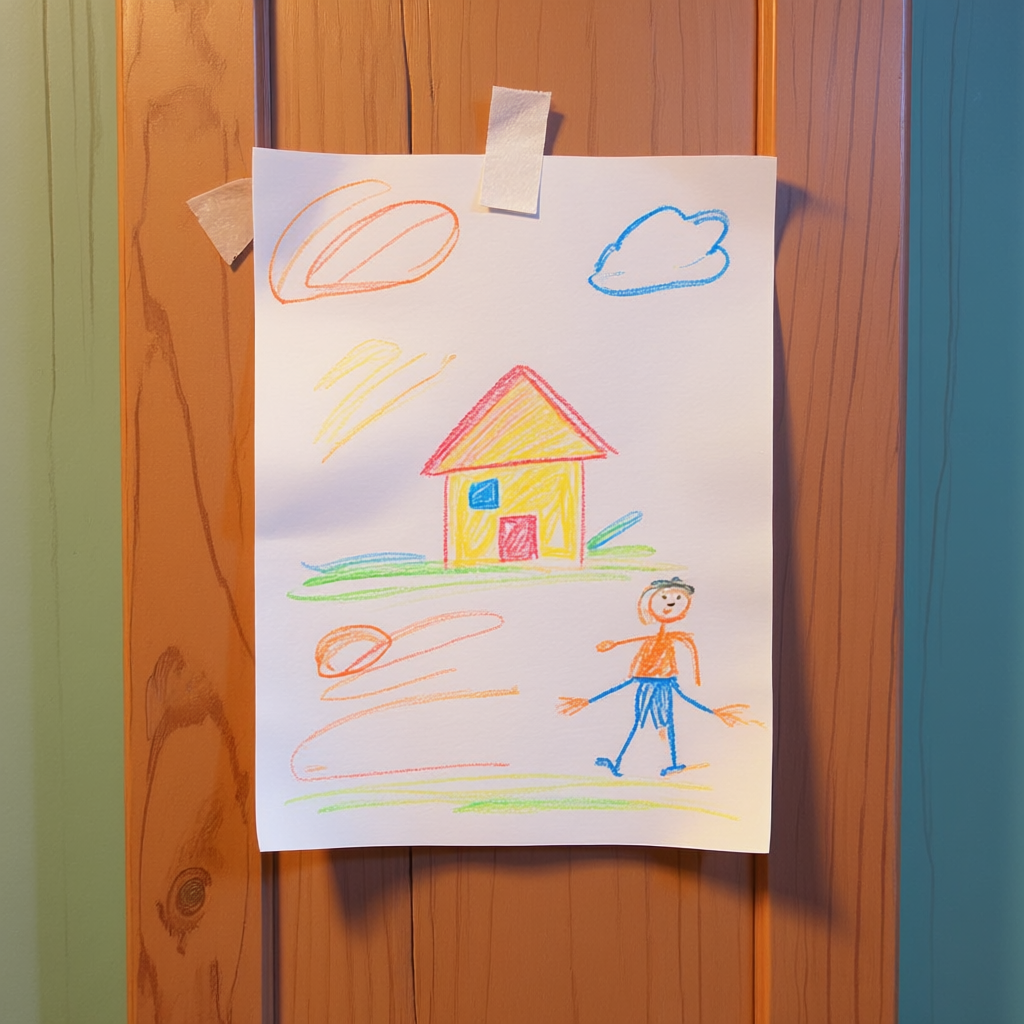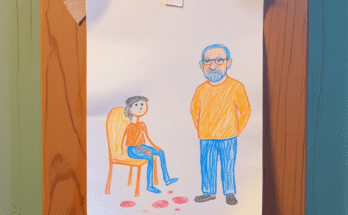I found it in the hallway. A scribble on white paper, taped to the fridge. My daughter’s name at the top: Lily, age 7. The drawing looked random. Lines. Curved shapes. A house. A red circle. A stick figure. I thought she merely played.
That night my wife and I heard sirens. Police knocked on our door. They asked about the drawing.
They said it matched scenes from cameras near the park. A witness reported suspicious activity at 8 pm. The man was seen carrying something. A red circle popped up on footage—on the man’s shirt. The layout of nearby buildings matched Lily’s house sketch. The stick figure matched height of the suspect. The house in Lily’s drawing had a blue door just like the building where the crime happened.
They showed us photos. At first I thought Lily copied from pictures. She said she saw the man by the park trying to break a window. She came home upset and drew what she saw. We’d dismissed what she said. When we saw the evidence, we realized she saw something critical.
Lily’s scribble helped police identify the suspect. They arrested a man found loitering near that blue‐door building. His shirt had a red circle embroidered. He confessed. They charged him with attempted burglary.
We stared at Lily’s drawing in disbelief. What we thought meaningless was evidence. Her eyes saw truth adults overlooked.
Lily said: “I drew what scared me.” We believed her then.
Now when people dismiss children’s sketches, I tell them: listen more. Ask questions. A scribble may carry more than art. It may carry proof.



